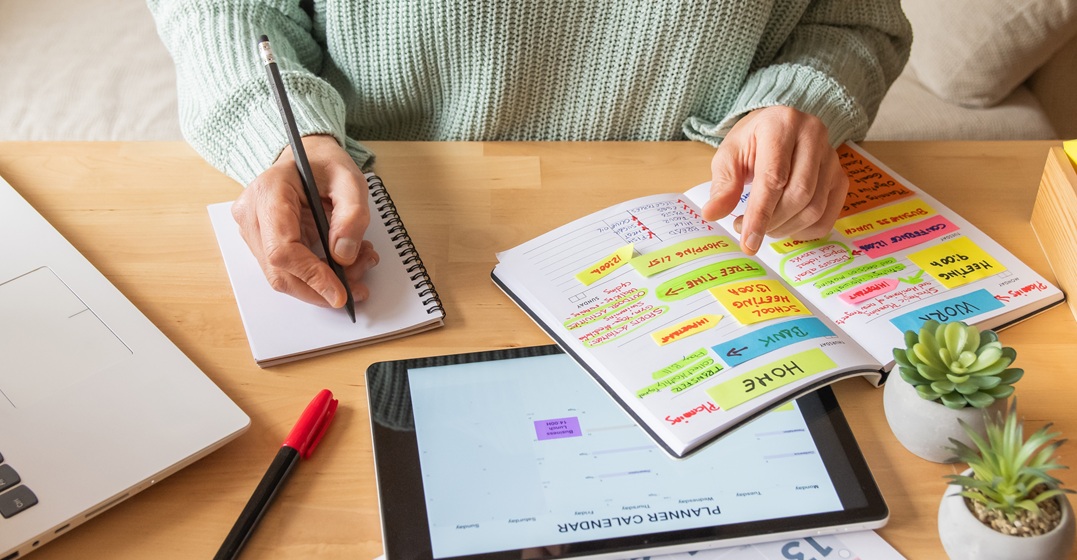When and how to use a hyphen vs a dash in English

What’s a hyphen? Is it like a dash? A hyphen vs a dash is a punctuation mark that we use to join words or part of words. It looks like this: -. It is like a dash, and lots of people confuse them. But, a dash is used to separate words. And, a dash has spaces around it; a hyphen doesn’t. Today, we’re looking at how to use hyphens in English, so let’s begin.
Hyphens with two-word adjectives
Hyphens with high and low
Hyphens with numbers
Hyphens with present and past participle
Hyphens with compound words in English
Hyphens vs dashes
Learn languages at your pace
Hyphens with two-word adjectives
We use hyphens to join two-word adjectives before nouns. We call these compound modifiers and we use them when two words come together to make one adjective. We only use hyphens when the adjectives come before the noun. If they come after the noun, we don’t need a hyphen.
This is a family-friendly restaurant.
This restaurant is family friendly.
That’s an energy-efficient roof.
That roof is energy efficient.
I like the on-campus flats better.
I like the flats on campus better.
Be careful!
If you’re using an adverb plus an adjective to describe something, you don’t need to use a hyphen.
It was a ridiculously hot day.
That’s a reasonably priced car.
Hyphens with high and low
We often use high- and low- to form compound adjectives. These words should be followed by a hyphen.
He’s a very high-energy child.
This is low-income housing.
That’s a high-quality jacket.
But, if the compound adjective comes after the noun, it doesn’t need a hyphen.
This jacket is high quality.
Hyphens with numbers
If we use a number and an adjective to form a two-word adjective, we also need to use a hyphen. This is true when the number is the first part of the adjective, and when the adjective comes before the noun.
A four-sided shape
A one-person ride
A seventeenth-century painting
We use hyphens when we write the numbers from twenty-one to ninety-nine.
I bought seventy-three bars of chocolate.
Were you born in nineteen eighty-seven?
It must be about two hundred and thirty-four degrees there.
When we use fractions as part of a compound adjective, for example, half or third, we use hyphens.
It was a half-baked idea.
She gave me one-third of her money.
Three-quarters of voters want the President to resign.
Learn languages at your pace
Hyphens with present and past participle
We use hyphens when we combine a noun or adjective with a present participle to form a describing word. A present participle is a word ending -ing. For example:
That’s a gorgeous-smelling perfume.
He’s a hungry-looking crocodile.
We also use hyphens when we combine a noun and a past participle to form a describing term. A past participle is the third form of the verb, and regular ones end in -ed.
It’s a family-owned hotel.
It’s a community-run project.
Hyphens with compound words in English
Compound words are made when two words form another. Sometimes they have a hyphen, and sometimes they don’t. The best place to check this is in a dictionary. There are three types of compound words: open, closed and hyphenated.
Open compound words remain as two words:
Closed compound words do not have a space or a hyphen between them:
Hyphenated compound words have a hyphen between them:
These words can change over time. The word well-being, as in "The well-being of employees is important to a company", has a hyphen in most dictionaries. But, it is often written as wellbeing now, even by large companies and in academic articles. E-mail becoming email is another example. Whoever said English was hard to learn?!
Hyphens with prefixes and suffixes
Prefixes and suffixes are not usually hyphenated. But, some common prefixes we use hyphens with are ex-, all- and self-, and the suffixes -elect and -free.
My ex-boyfriend is married with four children now.
It’s an all-encompassing look at the life of a great man.
A little bit of self-reflection would be good for you.
The President-elect is giving a speech.
It’s a sugar-free drink.
Using hyphens for clarity
Sometimes, we use a hyphen to make sure the meaning of something is clear, or to make a word easier to read.
There is a big difference between these two sentences:
Are you going to resign from your job?
Are you going to re-sign your contract?
In the second sentence, the hyphen makes it clear that the meaning is sign again, and not quit like in the first sentence.
We also do this when there is an awkward combination of letters:
I think we should re-elect the Chairwoman.
He lives semi-independently.
Some of these rules about hyphens are hard and fast: you shouldn’t mess with them! But some, like with compound words, are changing and the best place to check if you’re not sure how to use a hyphen is a good old (online) dictionary.
Hyphens vs dashes
A dash (also called em dash) is used to express parenthetical statements in informal writing. You use them in the same way as you'd use brackets. The dash is meant to emphasize your sentence.
Sometimes, a dash can also replace commas or colons
John is taking his kids (all 4 of them) to school.
John is taking his kids — all 4 of them — to school.












